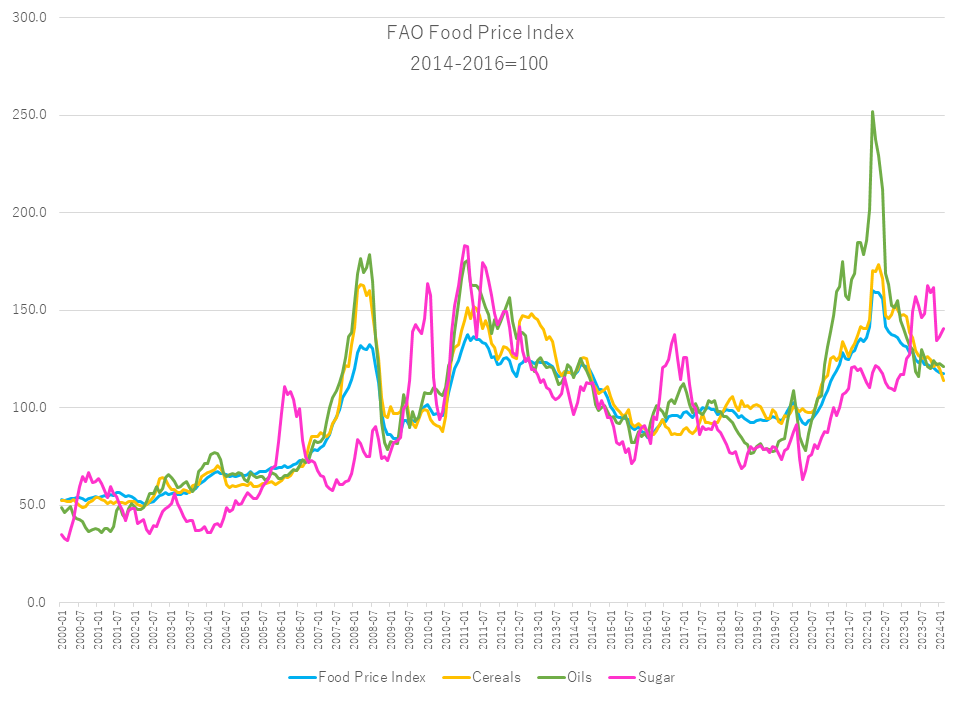Pick Up
974. February 2024 World Food Price Index

974. February 2024 World Food Price Index
The Food and Agriculture Organization of the United Nations (FAO) released on March 8 the World Food Price Index for February 2024, averaging 117.3 points, down 0.9 points (0.7%) from the previous month, reflecting lower cereal and vegetable oil prices, which offset higher sugar, meat, and dairy product prices. The price index was 13.8 points (10.5%) lower than a year earlier.
The Grain Price Index was at 113.8 points in February, 5.0% lower than the previous month and 22.4% lower than a year ago. World maize prices fell on favorable production prospects in Argentina and Brazil and competitive price offers from Ukraine, which is seeing favorable sea freight opportunities*. World wheat prices also fell as an aggressive export offensive from Russia put downward pressure on EU wheat prices. With the exception of purchases from Indonesia, import demand growth was moderate as harvests began in several countries and rice prices rose 1.6%.
Vegetable Oil Price Index fell 1.3% from the previous month and remained 11.0% lower than a year earlier. The decline in soybean, sunflower, and rapeseed oil prices exceeded the slight increase in palm oil prices. The decline in soybean prices was particularly large, reflecting large supplies from South America and favorable weather conditions. In contrast, palm oil prices rose on seasonal supply declines in major Southeast Asian producing countries.
Sugar prices rose for the second consecutive month in February, up 3.2% from the previous month and 12.5% higher than a year earlier. Prolonged light rainfall in Brazil and the prospect of lower production in the two largest exporters, Thailand and India, contributed to the price increase. On the other hand, increased rainfall in Brazil's main production areas at the end of February and the depreciation of the Brazilian currency against the U.S. dollar kept world sugar prices from rising higher.
*According to the Council on Foreign Relations, a think tank specializing in U.S. foreign policy and international affairs, in time of peace, ships from Ukraine sailed straight across the Black Sea toward Turkey's Bosphorus Strait, but in wartime, commercial vessels now sail along the western shore of the Black Sea along the Bulgarian and Romanian borders. However, now that commercial vessels are navigating along the west coast of the Black Sea along the Bulgarian and Romanian borders, Russian submarines seem to be less likely to attack civilian vessels in the shallows of the NATO area.
Contributor: IIYAMA Miyuki (Information Program)
